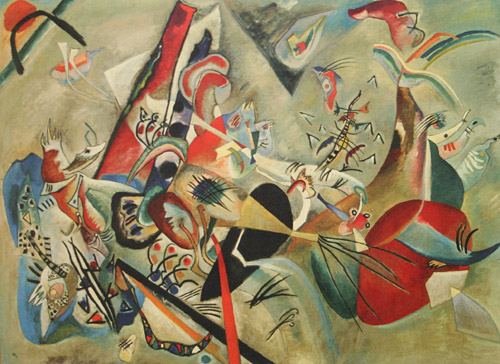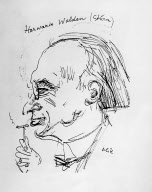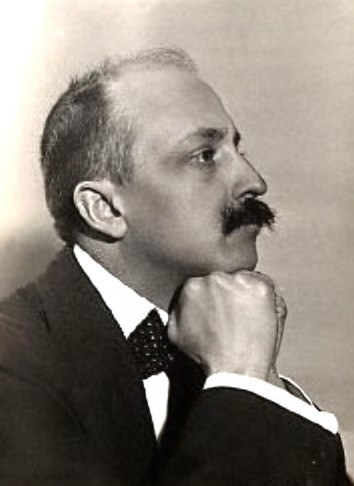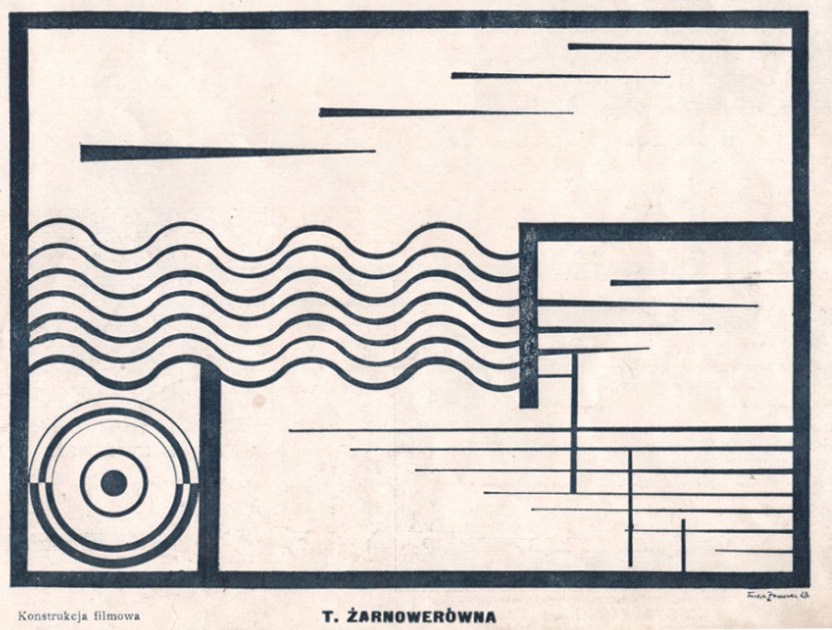|
Blok (avant-garde Group)
Blok of Cubists, Suprematists, and Constructivists aka Blok (in Polish: Blok Kubistów, Suprematystów i Konstruktywistów) was a Polish avant-garde artist collective active in the years 1924-1926 and founded by Władysław Strzemiński, Katarzyna Kobro, Henryk Berlewi, Henryk Stażewski and Mieczysław Szczuka, among others. Blok was a precursor to Praesens (1926-1930) and a.r. group (1929-1936), and all three collectives played a critical role in the development of Polish Constructivism. History The Blok group was established following the ''New Art Exhibition'' in Vilnius, which was organized in 1923, and inspired by Russian Constructivism, specifically the activities of artists associated with the Vkhutemas and INKhUK institutes in post-revolutionary Moscow. Similarly to their Russian counterparts, Polish Constructivist artists deployed art as a tool in aiding the formation of new, modern society through functional architecture, poster design, graphic design, typography ... [...More Info...] [...Related Items...] OR: [Wikipedia] [Google] [Baidu] |
Avant-garde
The avant-garde (; In 'advance guard' or ' vanguard', literally 'fore-guard') is a person or work that is experimental, radical, or unorthodox with respect to art, culture, or society.John Picchione, The New Avant-garde in Italy: Theoretical Debate and Poetic Practices' (Toronto: University of Toronto Press, 2004), p. 64 . It is frequently characterized by aesthetic innovation and initial unacceptability.Kostelanetz, Richard, ''A Dictionary of the Avant-Gardes'', Routledge, May 13, 2013 The avant-garde pushes the boundaries of what is accepted as the norm or the '' [...More Info...] [...Related Items...] OR: [Wikipedia] [Google] [Baidu] |
Institute Of Artistic Culture
The Institute of Artistic Culture (russian: Институт Художественной Культуры abbreviated to ИНХУК/INKhUK) was a theoretical and research based Russian artistic organisation founded in March Moscow in 1920 and continuing until 1924. Origins It was established under the authority of the Narkompros and funded through the Department of Fine Arts (IZO). In May 1920 Anatoly Lunacharsky appointed Wassily Kandinsky as its first director. David Shterenberg, who was at that time the director of IZO, stated "We organised the INKhUK as a cell for the determination of scientific hypotheses on matters of art". In its first year it attracted about 30 visual artists, Architects, musicians and art critics. Many of them were also taught at Vkhutemas and published in LEF. One of the consequences of state funding was the maintenance of stenographic records, originally kept by Varvara Stepanova and after 1921 by Nikolai Tarabukin. These were published in 1979 by Sel ... [...More Info...] [...Related Items...] OR: [Wikipedia] [Google] [Baidu] |
Polish Artist Groups And Collectives
Polish may refer to: * Anything from or related to Poland, a country in Europe * Polish language * Poles, people from Poland or of Polish descent * Polish chicken *Polish brothers (Mark Polish and Michael Polish, born 1970), American twin screenwriters Polish may refer to: * Polishing, the process of creating a smooth and shiny surface by rubbing or chemical action ** French polishing, polishing wood to a high gloss finish * Nail polish * Shoe polish * Polish (screenwriting), improving a script in smaller ways than in a rewrite See also * * * Polonaise (other) A polonaise ()) is a stately dance of Polish origin or a piece of music for this dance. Polonaise may also refer to: * Polonaises (Chopin), compositions by Frédéric Chopin ** Polonaise in A-flat major, Op. 53 (french: Polonaise héroïque, lin ... {{Disambiguation, surname Language and nationality disambiguation pages ... [...More Info...] [...Related Items...] OR: [Wikipedia] [Google] [Baidu] |
Herwarth Walden
Herwarth Walden (actual name Georg Lewin; 16 September 1879, in Berlin – 31 October 1941, in Saratov, Russia) was a German expressionist artist and art expert in many disciplines. He is broadly acknowledged as one of the most important discoverers and promoters of German avant-garde art in the early twentieth century (Expressionism, Futurism, Dadaism, Magic Realism). He was best known as the founder of the Expressionist magazine ''Der Sturm'' (The Storm) and its offshoots. Biography He studied composition and piano at the music academies of Berlin and Florence. However, his interest embraced all arts. So he became a musician, composer, writer, critic, and gallery owner. He was best known as the founder of the expressionist magazine ''Der Sturm'' (The Storm) and its offshoots. These consisted of a publishing house and journal, founded in 1910, to which he added an art gallery two years later. He discovered, sponsored and promoted many young, still unknown artists of different s ... [...More Info...] [...Related Items...] OR: [Wikipedia] [Google] [Baidu] |
Kurt Schwitters
Kurt Hermann Eduard Karl Julius Schwitters (20 June 1887 – 8 January 1948) was a German artist who was born in Hanover, Germany. Schwitters worked in several genres and media, including dadaism, constructivism, surrealism, poetry, sound, painting, sculpture, graphic design, typography, and what came to be known as installation art. He is most famous for his collages, called '' Merz Pictures''. Early influences and the beginnings of Merz, 1887–1922 Hanover Kurt Schwitters was born on 20 June 1887 in Hanover, at Rumannstraße No.2, now: No. 8, the only child of Eduard Schwitters and his wife Henriette (née Beckemeyer). His father was (co-)proprietor of a ladies' clothes shop. The business was sold in 1898, and the family used the money to buy some properties in Hanover, which they rented out, allowing the family to live off the income for the rest of Schwitters's life in Germany. In 1893, the family moved to Waldstraße (later renamed to Waldhausenstraße), future site of ... [...More Info...] [...Related Items...] OR: [Wikipedia] [Google] [Baidu] |
Theo Van Doesburg
Theo van Doesburg (, 30 August 1883 – 7 March 1931) was a Dutch artist, who practiced painting, writing, poetry and architecture. He is best known as the founder and leader of De Stijl. He was married to artist, pianist and choreographer Nelly van Doesburg. Early life Theo van Doesburg was born Christian Emil Marie Küpper on 30 August 1883, in Utrecht, Netherlands, as the son of the photographer and Henrietta Catherina Margadant. After a short period of training in acting and singing, he decided to become a storekeeper. He always regarded his stepfather, Theodorus Doesburg, to be his natural father, so that his first works are signed with Theo Doesburg, to which he later added "van". Career His first exhibition was in 1908. From 1912 onwards, he supported his works by writing for magazines. He considered himself to be a modern painter, at that time, although his early work is in line with the Amsterdam Impressionists and is influenced by Vincent van Gogh, both in style ... [...More Info...] [...Related Items...] OR: [Wikipedia] [Google] [Baidu] |
Filippo Tommaso Marinetti
Filippo Tommaso Emilio Marinetti (; 22 December 1876 – 2 December 1944) was an Italian poet, editor, art theorist, and founder of the Futurist movement. He was associated with the utopian and Symbolist artistic and literary community Abbaye de Créteil between 1907 and 1908. Marinetti is best known as the author of the first ''Futurist Manifesto'', which was written and published in 1909, and as a co-author of the Fascist Manifesto, in 1919. Childhood and adolescence Emilio Angelo Carlo Marinetti (some documents give his name as "Filippo Achille Emilio Marinetti") spent the first years of his life in Alexandria, Egypt, where his father (Enrico Marinetti) and his mother (Amalia Grolli) lived together ''more uxorio'' (as if married). Enrico was a lawyer from Piedmont, and his mother was the daughter of a literary professor from Milan. They had come to Egypt in 1865, at the invitation of Khedive Isma'il Pasha, to act as legal advisers for foreign companies that were taking part i ... [...More Info...] [...Related Items...] OR: [Wikipedia] [Google] [Baidu] |
Kazimir Malevich
Kazimir Severinovich Malevich ; german: Kasimir Malewitsch; pl, Kazimierz Malewicz; russian: Казими́р Севери́нович Мале́вич ; uk, Казимир Северинович Малевич, translit=Kazymyr Severynovych Malevych ., group=nb (Запись о рождении в метрической книге римско-католического костёла св. Александра в Киеве, 1879 год // ЦГИАК Украины, ф. 1268, оп. 1, д. 26, л. 13об—14. – 15 May 1935) was a ... [...More Info...] [...Related Items...] OR: [Wikipedia] [Google] [Baidu] |
Vytautas Kairiūkštis
Vytautas Kairiūkštis ( pl, Witold Kajruksztis, 1890 in Sejny – 1961 in Vilnius) was a Lithuanian constructivist artist. From 1910 to 1911 Kairiukstis attended the Vilnius Drafting School. In 1923 Kairiūkštis organised the New Art Exhibition which lasted from May 20 to June 20. In this he was aided by Władysław Strzemiński, who had moved to Vilnius the year before. This was the first avant-garde art exhibition in Lithuania and featured Cubist, Constructivist, and Suprematist Suprematism (russian: Супремати́зм) is an early twentieth-century art movement focused on the fundamentals of geometry (circles, squares, rectangles), painted in a limited range of colors. The term ''suprematism'' refers to an abstra ... works. References {{DEFAULTSORT:Kairiukstis, Vytautas 1890 births 1961 deaths Constructivism (art) Lithuanian painters Imperial Moscow University alumni Burials at Bernardine Cemetery ... [...More Info...] [...Related Items...] OR: [Wikipedia] [Google] [Baidu] |
Teresa Żarnowerówna
Teresa Żarnowerówna (or Żarnower; – April 30, 1949) was a Polish avant-garde artist, painter, sculptor, scenographer, and architect. Personal life Teresa Żarnowerówna was born in Targówek, Warsaw in either 1895 or 1897 (sources cannot agree) in a Polonized (assimilated) Jewish family. She had a brother, David Żarnower. She had an affair with a fellow artist and mountaineer Mieczysław Szczuka until his death in 1927. In 1937, due to the increasingly precarious position of Jews in Poland, she left Poland to live in Paris, Spain, Portugal, and Canada, and eventually arrived as a refugee in the US, where she would remain until her early death. She died 30 April 1949 at her apartment on 15 West 67th Street. ''The New York Times'' reported she "died unexpectedly" at age 48. It is said that she died soon after receiving a letter from her brother, who wrote that he had survived World War II and was in Russia. In her New York flat, a letter was found at her side, of which ... [...More Info...] [...Related Items...] OR: [Wikipedia] [Google] [Baidu] |
Russian Revolution
The Russian Revolution was a period of Political revolution (Trotskyism), political and social revolution that took place in the former Russian Empire which began during the First World War. This period saw Russia abolish its monarchy and adopt a socialist form of government following two successive revolutions and a bloody civil war. The Russian Revolution can also be seen as the precursor for the other European revolutions that occurred during or in the aftermath of WWI, such as the German Revolution of 1918–1919, German Revolution of 1918. The Russian Revolution was inaugurated with the February Revolution in 1917. This first revolt focused in and around the then-capital Petrograd (now Saint Petersburg). After major military losses during the war, the Russian Army had begun to mutiny. Army leaders and high ranking officials were convinced that if Nicholas II of Russia, Tsar Nicholas II abdicated, the domestic unrest would subside. Nicholas agreed and stepped down, usher ... [...More Info...] [...Related Items...] OR: [Wikipedia] [Google] [Baidu] |





.jpg)



